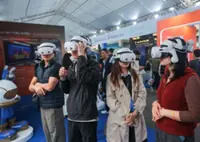Neuralink wants to help paralysed people, to begin with. Eventually, Musk says his device could help people with hearing and vision loss. — Reuters
Elon Musk’s Neuralink Corp has performed its first brain implant on a human – a major step toward the billionaire’s goal of one day enabling people to control computers with their minds. And for the first time Musk has given the implant device a name.
Here’s all you need to know about Neuralink and the company’s first human trial:





